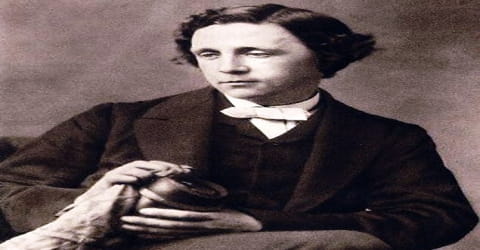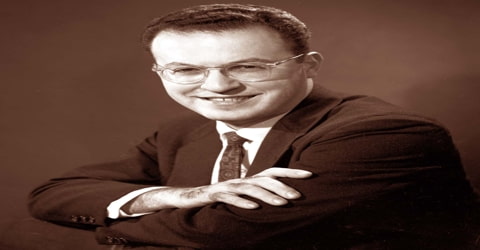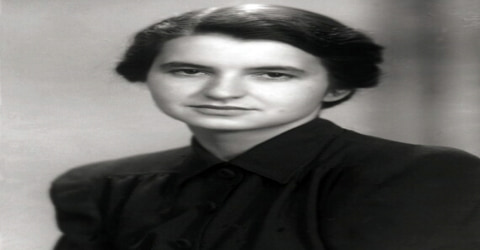Biography of Lewis Carroll
Lewis Carroll – English writer.
Name: Charles Lutwidge Dodgson
Date of Birth: 27 January 1832
Place of Birth: Daresbury, Cheshire, England
Date of Death: 14 January 1898 (aged 65)
Place of Death: Guildford, Surrey, England
Occupation: Author, illustrator, poet, mathematician, photographer, teacher
Father: Charles Dodgson
Mother: Frances Jane Lutwidge
Early Life
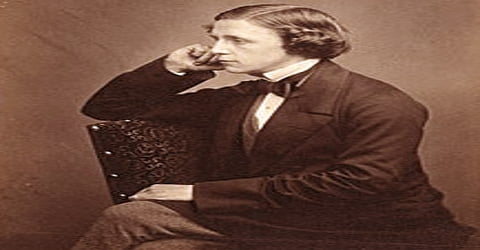
The English church official Lewis Carroll was born on January 27, 1832, in Daresbury, Cheshire, England. He was an English writer of world-famous children’s fiction, notably Alice’s Adventures in Wonderland and its sequel Through the Looking-Glass. He was noted for his facility at word play, logic, and fantasy. The poems Jabberwocky and The Hunting of the Snark are classified in the genre of literary nonsense. He was also a mathematician, photographer, and Anglican deacon.
Brought up in a family of clergymen, Lewis Carroll exhibited talent in singing, storytelling and writing poetry from early childhood. He was excellent in academics and graduated with a first class honors in mathematics from Christ Church College, Oxford. He then won the Mathematical Lectureship at Christ Church, a position he held for over 25 years.
Carroll shared a very special bond with little children. Alice Liddell, daughter of the Dean of Christ Church, Henry Liddell, is widely identified as the original for ‘Alice in Wonderland’, though Carroll always denied this. The book became a global bestseller in children fiction and earned him worldwide fame. He also took up photography and earned a reputation in the new art form. His subjects were often little children whom he photographed in different costumes and situations. Having juggled various occupations throughout his life, he retired from his teaching profession and photography around 1881.
Lewis Carroll’s other famous works are ‘Through the Looking-Glass’ and What Alice Found There’ (1871; a sequel to the first Alice book) and mathematical writings like ‘An Elementary Treatise on Determinants’ (1867) and ‘Curiosa Mathematica’ (1888). He is best remembered for his talent in wordplay, logic, and child-like fantasy.
Childhood, Family and Educational Life
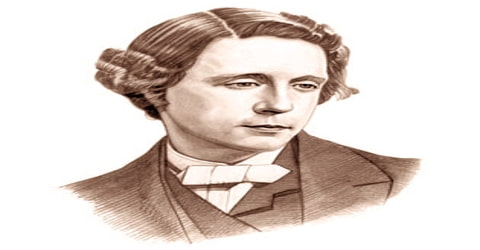
Charles Lutwidge Dodgson (ˈlʌtwɪdʒ ˈdɒdʒsən), better known by his pen name Lewis Carroll, was born on January 27, 1832, the eldest son and third of eleven children born to Frances Jane Lutwidge and the Reverend Charles Dodgson, in the village of Daresbury, England. His family was primarily northern British with some Irish relations. Many men in his family were either army officers or clergymen. His father was an active and conservative priest of the Church of England. When Carroll was eleven years old, his family moved to a spacious church house in North Yorkshire, where they lived for the next 25 years.
At the age of twelve, Dodgson joined Richmond Grammar School, Yorkshire (1844–45). In 1846, he entered the Rugby School where he experienced three years of unhappiness from being bullied. Nevertheless, he continued to excel in academics.
Dodgson went to Westminster School and then to Christ Church, Oxford, England. He reverted to the other family tradition and took holy orders. He was mathematically gifted and won a double first degree, which could have been the prelude to a brilliant academic career. He graduated in 1854, and in 1855 he became a mathematical lecturer (more like a tutor) at the college.
As a boy, Dodgson excelled in mathematics and won many academic prizes. At age 20, he was awarded a studentship (called a scholarship in other colleges) to Christ College. Apart from serving as a lecturer in mathematics, he was an avid photographer and wrote essays, political pamphlets, and poetry. “The Hunting of the Snark” displays his wonderful ability in the genre of literary nonsense.
Personal Life

In his childhood, Carroll suffered a fever that left him with a deaf ear. At the age of 17, he also suffered a severe attack of whooping cough that resulted in a weak chest. He also stammered which affected his social life.
The studentship at Christ Church College was dependent on remaining unmarried. Carroll was supposed to become a priest, after which he could have married and been appointed to a hamlet by the college. However, he felt unsuitable for parish work and though he briefly thought of marriage, he finally chose bachelorhood. Carroll was a charming entertainer. He could sing reasonably well and be not afraid to perform before an audience. He was skilled at mimicry, storytelling, and farces as well.
Career and Works
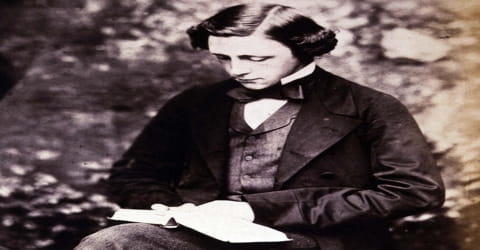
Lewis Carroll continued at Christ Church College studying and teaching mathematics. In 1855, he won the Christ Church Mathematical Lectureship, a post he continued to hold for the next 26 years until his resignation in 1881. He worked primarily in the fields of geometry, linear and matrix algebra, mathematical logic, and recreational mathematics, publishing several books under his real name. He also contributed new ideas in linear algebra, probability, and the study of elections and committees.
Lewis Carroll suffered from a bad stammer, but he found himself vocally fluent when speaking with children. The relationships he had with young people in his adult years are of great interest, as they undoubtedly inspired his best-known writings and have been a point of disturbed speculation over the years. Carroll loved to entertain children, and it was Alice, the daughter of Henry George Liddell, who can be credited with his pinnacle inspiration. Alice Liddell remembers spending many hours with Carroll, sitting on his couch while he told fantastic tales of dream worlds. During an afternoon picnic with Alice and her two sisters, Carroll told the first iteration of what would later become Alice’s Adventures in Wonderland. When Alice arrived home, she exclaimed that he must write the story down for her. He fulfilled the small girl’s request, and through a series of coincidences, the story fell into the hands of the novelist Henry Kingsley, who urged Carroll to publish it.
Among adults, Lewis Carroll was reserved, but he did not avoid their company as some reports have stated. He attended the theater frequently and was absorbed by photography and writing. After taking up photography in 1856, he soon found that his favorite subjects were children and famous people, including English poet Alfred Lord Tennyson (1809–1892), Italian painter and poet D. G. Rossetti (1828–1882), and English painter John Millais (1829–1896). Helmut Gernsheim wrote of Carroll’s photographs of children, “He achieves excellence which in its way can find no peer.” Though photography was mostly a hobby, Carroll spent a great deal of time on it until 1880.
After his resignation from the Lecturer post, he served as the curator of the common room (manager of the staff club) at Christ Church College from 1882 to 1892.
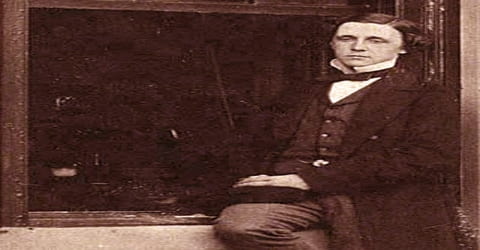
From a young age, Lewis Carroll wrote poetry and short stories. He produced the magazine ‘The Rectory Umbrella’ from 1849 to 1853. In 1845 he had begun composing the magazine ‘Useful and Instructive Poetry’ which was ultimately published after more than a 100 years in 1954.
The book Alice’s Adventures in Wonderland was released in 1865. It gained steady popularity, and as a result, Carroll wrote the sequel, Through the Looking-Glass and What Alice Found There (1871). By the time of his death, Alice had become the most popular children’s book in England, and by 1932 it was one of the most popular in the world.
Based on the chess games Carroll played with the Liddell children, it included material he had written before he knew them. The first section of “Jabberwocky,” for example, was written in 1855. More of Carroll’s famous Wonderland characters such as Humpty Dumpty, the White Knight, and Tweedledum and Tweedledee appear in this work than in Alice in Wonderland.
Between 1854 and 1856, his work appeared in the national publications The Comic Times and The Train, as well as smaller magazines such as the Whitby Gazette and the Oxford Critic. Most of this output was humorous, sometimes satirical, but his standards and ambitions were exacting. “I do not think I have yet written anything worthy of real publication (in which I do not include the Whitby Gazette or the Oxonian Advertiser), but I do not despair of doing so some day,” he wrote in July 1855. Sometime after 1850, he did write puppet plays for his siblings’ entertainment, of which one has survived: La Guida di Bragia.
On Alice’s insistence, he wrote down one such story and presented to her in November 1864 a handwritten, illustrated manuscript called ‘Alice’s Adventures under Ground’. The work was finally published by Macmillan Publishers as ‘Alice’s Adventures in Wonderland’ in 1865.
In 1856, he first used the pen name “Lewis Carroll” while publishing a romantic poem called ‘Solitude’ in the publication ‘The Train’. The same year, a new Dean of the college – Henry Liddell arrived at Christ Church with his family. Carroll became good friends with the dean’s children, namely the three sisters Lorina, Edith, and Alice. He spent a lot of time with them, amusing them with his interesting stories.
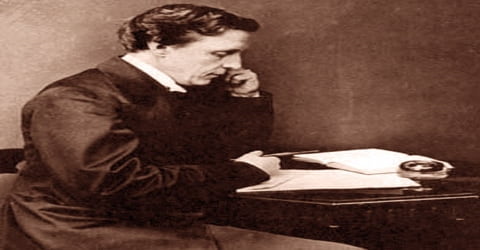
In 1876, Dodgson produced his next great work, The Hunting of the Snark, a fantastical “nonsense” poem exploring the adventures of a bizarre crew of nine tradesmen and one beaver, who set off to find the snark. It received largely mixed reviews from Carroll’s contemporary reviewers, but was enormously popular with the public, having been reprinted seventeen times between 1876 and 1908, and has seen various adaptations into musicals, opera, theatre, plays, and music. Painter Dante Gabriel Rossetti reputedly became convinced that the poem was about him.
Unlike most of the children’s books of the day, Alice and Through the Looking Glass did not attempt to convey obvious moral lessons. Nor did they contain what critics have tried to insist are there hidden meanings relating to religion or politics. They are delightful adventure stories in which a normal, healthy, clearheaded little girl reacts to the “reality” of the adult world. Their appeal to adults as well as to children lies in Alice’s intelligent response to ridiculous language and action.
The character of ‘Alice’ is believed to be inspired by a small girl Alice Liddell, though the assumption had been denied by the author himself.
Within the academic discipline of mathematics, Dodgson worked primarily in the fields of geometry, linear and matrix algebra, mathematical logic, and recreational mathematics, producing nearly a dozen books under his real name. Dodgson also developed new ideas in linear algebra (e.g., the first printed proof of the Kronecker–Capelli theorem), probability, and the study of elections (e.g., Dodgson’s method) and committees; some of this work was not published until well after his death. His occupation as Mathematical Lecturer at Christ Church gave him some financial security.
Besides writing, Carroll created a number of fine photographs. His notable portraits include those of the actress Ellen Terry and the poet Alfred Tennyson. He also photographed children in every possible costume and situation, eventually making nude studies of them. Despite conjecture, little real evidence of child abuse can be brought against him.
With his well-known skills in photography, he was popular among higher social circles as well. He made portraits of famous people such as Ellen Terry, Dante Gabriel Rossetti, Michael Faraday, Lord Salisbury, Lord Alfred Tennyson, etc. He gave up photography all of a sudden in 1880, after mastering the art form for over 24 years. In the face of modernism, the technology he used had become outdated, thus affecting the quality of photographs he produced.
In 1889, Carroll invented ‘The Wonderland Postage-Stamp Case’ to promote letter writing. He also invented a writing tablet called the nyctograph that allowed users to take notes in the dark if required. He created a number of popular games such as an early version of the ‘Scrabble’ and the ‘Doublet’, a form of brain-teaser word game.
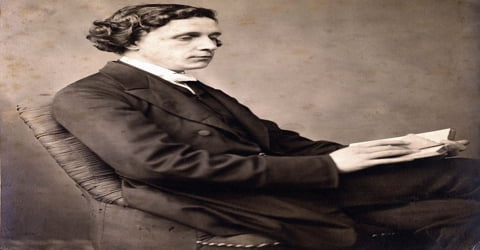
Carroll also invented a rule to find the day of the week for any date; a way to justify right margins on a typewriter; new systems of parliamentary representation; fair elimination rules for tennis tournaments; a double-sided adhesive strip to shut envelopes; and a device to help bedbound invalids read from a book, among others.
He published several other nonsense works, including The Hunting of the Snark (1876), Sylvie and Bruno (1889), and Sylvie and Bruno Concluded (1893). He also wrote a number of pamphlets poking fun at university affairs, which appeared under a fake name or without any name at all, and he composed several works on mathematics under his true name.
In 1895, Carroll tried to re-establish himself as a writer again by publishing a two-volume story of the fairy siblings ‘Sylvie and Bruno’. Although it wasn’t as successful as the Alice books, it continued to remain in print for over a century.
According to a special letter register that he created, he wrote and received as many as 98,721 letters. He published his advice about good letter writing in a pamphlet titled ‘Eight or Nine Wise Words About Letter-Writing’.
Awards and Honor
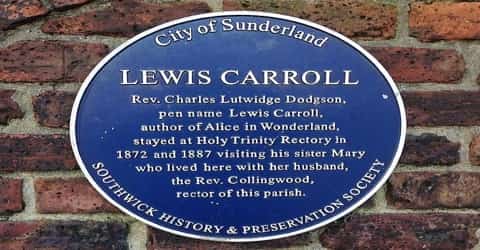
(Blue plaque in Sunderland, north-east England commemorating Carroll’s visits to his sister.)
The Lewis Carroll Children’s Library is located on Copenhagen Street in Islington. Also, a memorial stone in his honor is placed in Poets’ Corner, Westminster Abbey.
Death and Legacy
Dodgson died of pneumonia following influenza on 14 January 1898 at his sisters’ home, “The Chestnuts”, in Guildford. He was two weeks away from turning 66 years old. His funeral was held at the nearby St Mary’s Church. He is buried in Guildford at the Mount Cemetery.
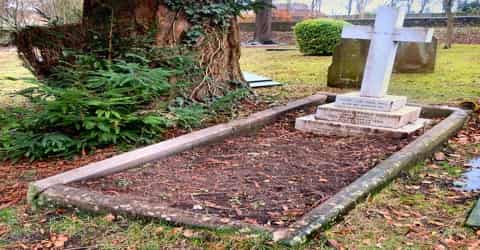
The ‘Alice’ series of books comprising ‘Alice’s Adventures in Wonderland’ (1865) and ‘Through the Looking-Glass and What Alice Found There’ (1871) are among the best children’s fiction in the world. They are amusing adventure stories of an intelligent little girl, Alice, who falls through a rabbit hole into a fantasy world inhabited by strange beings. The books are considered to be some of the best examples of the literary nonsense genre.
There are societies in many parts of the world dedicated to the enjoyment and promotion of his works and the investigation of his life.
Information Source:
